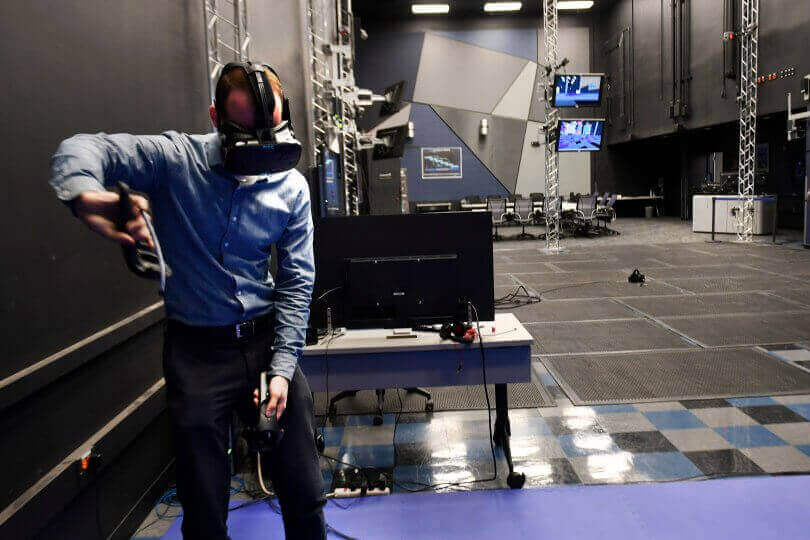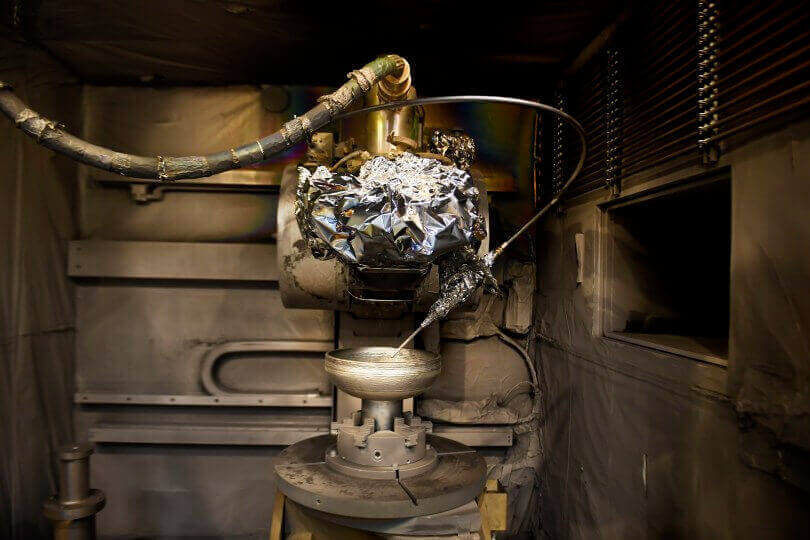Lockheed Martin is making their design process more affordable and innovative with 3D imaging and virtual reality.
3D printing and virtual reality have both emerged as vital technologies in the future of industrial innovation. If you need any proof of this, just take a look at what Lockheed Martin is doing with the both of them.
Earlier this week, the pioneering aerospace and defense company invited the press to their Collaborative Human Immersive Laboratory (CHIL) in Colorado. The visitors were treated to a remarkable surprise, a first-hand look at the 3D holographic platform used to design new engine systems.
Using a pair of 3D virtual reality glasses with integrated motion tracking, Lockheed Martin has created an immersive platform. The hologram is enclosed within an area referred to as The Cave, a part of the breakthrough technology that employees have developed within the CHIL.

The CHIL Lab: Design and Manufacturing of the Future
Lockheed Martin engineers use this VR system to evaluate designs. This enables engineers to sort out potential issues faster than if they only had access to computer models. Furthermore, the company is able to tackle more complex designs in a shorter amount of time.
The VR environment is extremely immersive, and also saves them around $10 million dollars per year. Instead of constructing a physical prototype over and over until the component is perfect, the engineering team can correct the issues first within the virtual world.
Lockheed Martin also cuts an abundance of spent time with this 3D holographic platform. Outside of engineering work, employees can also use a VR program to view how many satellites they would have to move to roll an entire spacecraft through the room.
CHIL lab employees are also developing a shared VR environment that will allow people to enter the same virtual space from different perspectives. Engineers can collaborate more freely, while customers will have more involvement in the design process.
From Virtual Reality to Lockheed Martin’s 3D Printing Lab
After the engineers eliminate flaws from their virtual 3D designs, they are sent to the 3D printing lab for prototyping. The industrial additive manufacturing technology allows Lockheed Martin to manufacture custom parts and tooling in weeks.
Prior to their use of 3D printing, the aerospace company would commission other manufacturers to create their parts. Turnaround would take months with this process. Now, their metal 3D printer can create metal spacecraft parts directly in-house.
First constructed in 2010, the CHIL lab started off with a $5 million investment. Now, it’s one of the largest VR labs in the entire aerospace industry. Clearly, as these technologies continues to advanced, so will the Lockheed Martin facility.

Source: Denver Post
License: The text of "Lockheed Martin Uses VR to Design Space Engine" by All3DP is licensed under a Creative Commons Attribution 4.0 International License.